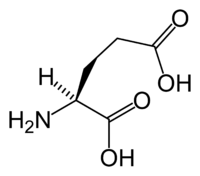
Photo from wikipedia
Repurposing PARP-1 inhibitors (PARPi) for non-oncological applications offers an attractive therapeutic strategy for pathological conditions characterized by PARP-1 hyperactivity. In the context of Parkinson's disease (PD), PARP-1 hyperactivity has been… Click to show full abstract
Repurposing PARP-1 inhibitors (PARPi) for non-oncological applications offers an attractive therapeutic strategy for pathological conditions characterized by PARP-1 hyperactivity. In the context of Parkinson's disease (PD), PARP-1 hyperactivity has been linked to neuronal death and disease progression. From a therapy perspective, the evaluation of PARPi as neuroprotective agents may offer a new therapeutic alternative for neurodegenerative disorders. An ideal PARPi needs to inhibit PARP-1 hyperactivity while also limiting downstream DNA damage and cellular toxicity-an effect that is attractive in cancer but far from ideal in neurological disease applications. Consequently, in this study, we set out to evaluate the neuroprotective properties of a previously reported low-toxicity PARPi (10e) using in vitro neuronal models of PD. 10e is a structural analogue of FDA-approved PARPi olaparib, with high PARP-1 affinity and selectivity. Our studies revealed that 10e protects neuronal cells from oxidative stress and DNA damage. In addition, 10e exhibits neuroprotective properties against α-synuclein pre-formed fibrils (αSyn PFF) mediated effects, including reduction in the levels of phosphorylated αSyn and protection against abnormal changes in NAD+ levels. Our in vitro studies with 10e provide support for repurposing high-affinity and low-toxicity PARPi for neurological applications and lay the groundwork for long-term therapeutic studies in animal models of PD.
Journal Title: Molecular neurobiology
Year Published: 2021
Link to full text (if available)
Share on Social Media: Sign Up to like & get
recommendations!